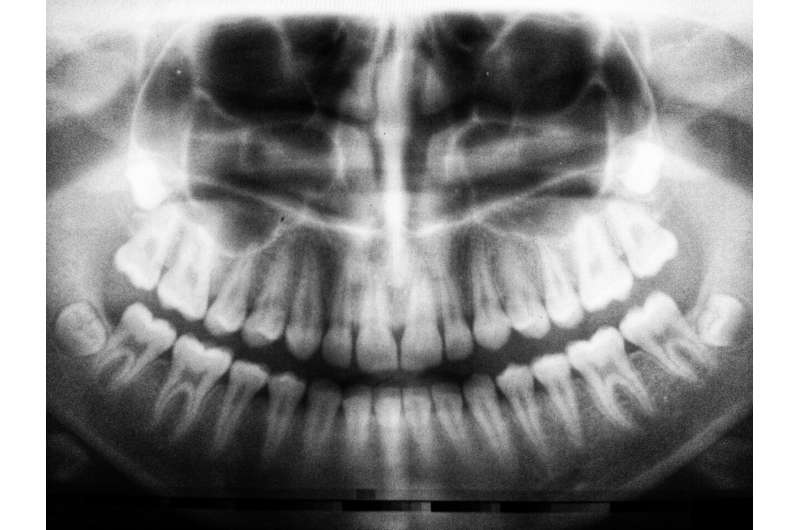This article has been reviewed according to Science X's editorial process and policies. Editors have highlighted the following attributes while ensuring the content's credibility:
fact-checked
trusted source
proofread
Obstructive sleep apnea tied to weaker bones and teeth in adults

Obstructive sleep apnea may be linked to low bone mineral density in adults, according to University at Buffalo-led research.
The findings are crucial for individuals with sleep apnea, as low bone mineral density is an indicator of osteoporosis—a condition in which bones become weak and brittle. In addition to increasing the risk of fractures, low bone mineral density also impacts oral health, causing teeth to become loose and dental implants to fail, says senior author Thikriat Al-Jewair, DDS, associate professor of orthodontics in the UB School of Dental Medicine and director of the school's Advanced Education Program in Orthodontics.
The study was published in November in CRANIO: The Journal of Craniomandibular and Sleep Practice. The researchers used cone beam computed tomography (CBCT)—a type of X-ray—to measure bone density in the head and neck of 38 adult participants, half of whom had obstructive sleep apnea.
When controlling for age, sex and weight, the participants with obstructive sleep apnea had significantly lower bone mineral density than the participants without the condition.
Obstructive sleep apnea, which is characterized by difficulty breathing while asleep, can cause hypoxia (low levels of oxygen in the body), inflammation, oxidative stress and shortened breathing patterns. Each of these symptoms may have a chronic negative effect on bone metabolism and, ultimately, bone density, says Al-Jewair.
"While the link between obstructive sleep apnea and low bone mineral density has yet to be fully explored, this study offers new evidence on their connection that could have several implications for orthodontic treatment," says Al-Jewair, also assistant dean for equity, diversity and inclusion in the UB School of Dental Medicine.
"If a patient has been diagnosed with sleep apnea, this can influence treatment planning and management. CBCT imaging has become an integral part of daily orthodontic practice and could be used as a screening tool for low bone mineral density," she said. "Orthodontists could then inform their patients of their propensity for low bone mineral density and encourage them to seek further consultation with their physician, as well as warn the patient of possible adverse outcomes, increased risks and effects on treatment time."
Future research with larger sample sizes is needed, says Al-Jewair.
More information: Mira Daljeet et al, Association between obstructive sleep apnea syndrome and bone mineral density in adult orthodontic populations, CRANIO (2022). DOI: 10.1080/08869634.2022.2142724



















